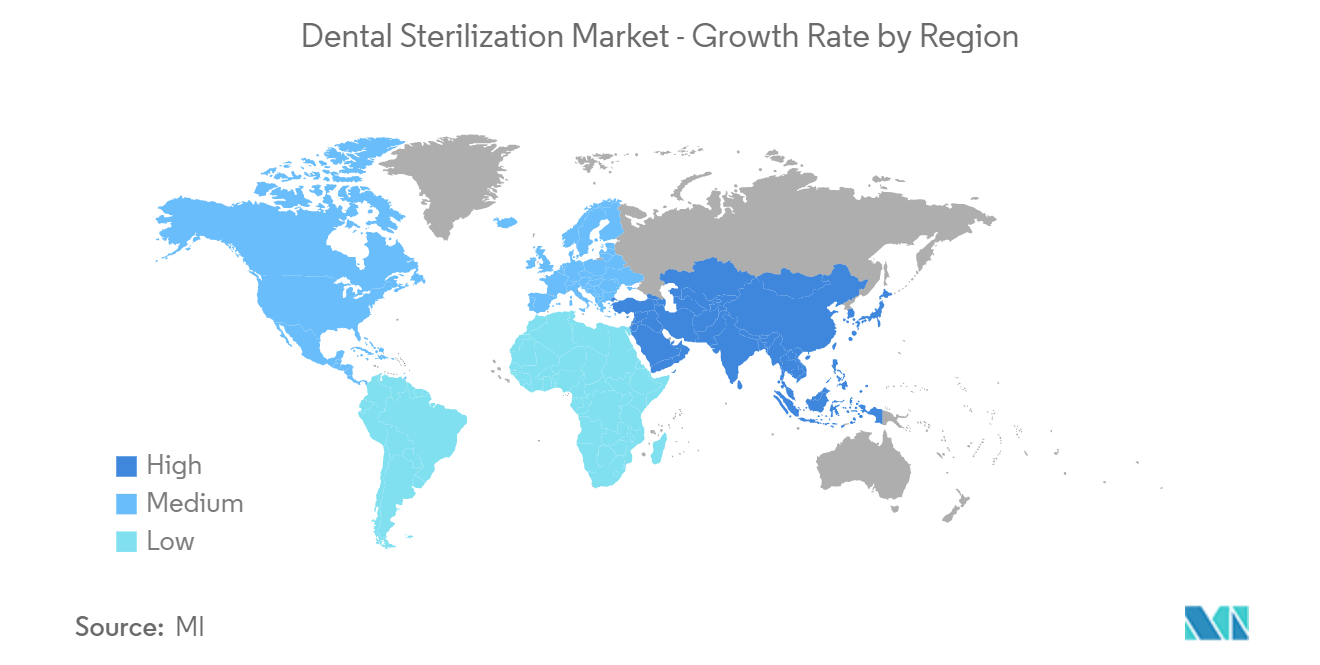Market Trends of Dental Sterilization Industry
High-temperature Sterilizers Segment Expected to Witness Growth Over the Forecast Period
The high-temperature sterilizers segment accounted for the largest share of the market and is expected to be the dominant market during the forecast period. The growth can be attributed to the cost-effective and reliable nature of the instruments and their efficiency in disinfecting complicated dental devices. The development of a safe and comfortable environment for patients is one of the critical priorities of dental healthcare providers.
A dental high-temperature sterilizer is utilized for proper sanitization of dental equipment after use. The high-steam sterilizer uses high pressure, temperature, and steam to combat debris and bacteria. The steam sterilizers meet the Centers for Disease Control and Prevention's (CDC's) requirements for proper sterilization, allowing dentist offices to reuse various instruments and tools.
Additionally, technologically advanced products are being introduced by the major market players to bring down the cost of sterilization and effectively sterilize equipment. For instance, In September 2020, Midmark Corp. introduced the new Sterilizer Data Logger and upgraded its Midmark M3 Steam Sterilizer. Both the devices bring efficiency, compliance, and speed to the processing of instruments. Hence, such new developments are elevating the market growth.
Therefore, the high-temperature sterilizers segment is expected to witness significant growth over the forecast period due to the abovementioned factors.

North America Expected to Dominate the Dental Sterilization Market
North America is expected to dominate the market owing to factors such as the increasing awareness of oral healthcare, increasing incidences of dental diseases, and increasing demand for advanced cosmetic dental procedures in the region.
For instance, according to the American Dental Association Report 2021, in the United States, more than 5 million people aged 65 to 74 have complete tooth loss, with nearly 3 million edentulous in 2020. Tooth loss, on the other hand, is primarily a problem for the elderly. This is because 91% of adults aged 20 to 64 have dental caries, with a staggering 27% going untreated in the same year. Thus, geriatric loss is a common problem due to dental diseases, thereby driving the demand for dental sterilization devices is likely to boost the overall target market growth in the studied period.
Additionally, the National Institute of Health article titled 'Estimates of Funding for Various Research, Condition, and Disease Categories' published in June 2021, stated that an estimated USD 638 million annual research support for dental/Oral and Craniofacial Disease based on grants, contracts, and other funding mechanisms used across the National Institutes of Health. It is anticipated that the demand for sterilization equipment will rise alongside research activity for new technologies and treatments as a result of the rising research funding for dental diseases. Thereby, this is elevating the growth of the market.
In addition, in June 2022, the Mother Cabrini Health Foundation awarded the University at Buffalo School of Dental Medicine with a grant of USD 550,000 in order to help the Western New York's homeless and underinsured families access dental care. Such initiatives support dental practices is increasing the demand for sterilization of dental equipment hence it is expected to boost the market growth.
Moreover, several market players are engaged in the implementation of strategic initiatives, thereby contributing to market growth. For instance, in March 2020, W&H Dentalwerk launched Lyla, an S-type autoclave, which is future-proof and best-performing for safe reprocessing and infection prevention. It also includes a feature to upgrade from S to B type autoclave. Hence, this is elevating the market growth.
Therefore, owing to the aforesaid factors the growth of the studied market is anticipated in the North America Region.


